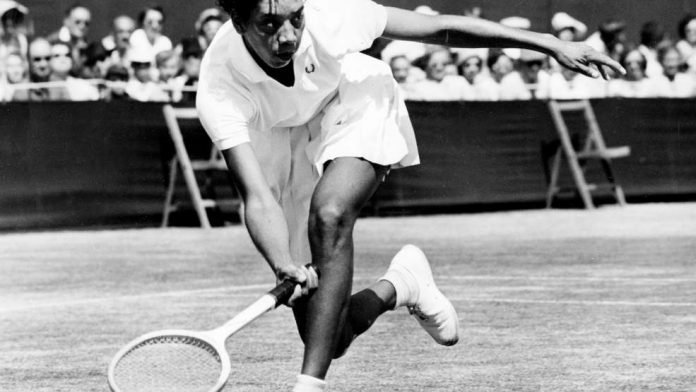It’s 70 years since the late Althea Gibson broke the color barrier, becoming the first Black player to compete at the U.S. Nationals. On what would have been her 93rd birthday, wtatennis.com reflects on the remarkable achievements of the woman who Serena Williams describes as the sport’s ‘most important pioneer’.
Althea Gibson, who dropped out of school at 13 and had a fondness for street fighting, was an unlikely pioneer in a sport as refined as tennis. Yet Gibson would break the color barrier in 1950, earn a college degree, and become a role model to many, including a young Billie Jean King, who cherished her copy of Gibson’s autobiography, I Always Wanted to Be Somebody.
King, an advocate for gender and racial equality, credits Gibson with transforming tennis. “What people have to understand is how she persevered and what she means to our sport,” King says. “If people really learn her story, believe me, it will inspire them to do great things with their lives.”
It’s been 70 years since Gibson became the first Black player to compete in what’s now the US Open. Today, the Black Lives Matter movement is helping to unite people in the quest for equality. For trailblazers such as Gibson, the path to equal rights was more isolated.
At that time in the US, schools and other places, including restaurants, were segregated, especially in the South under Jim Crow laws. Tennis also was divided, with white players and Black players competing on separate tours. It was an elite sport with no prize money, generally played by the upper class, reserved for the white and wealthy.
Filmmaker Rex Miller explains that Gibson faced many challenges with limited resources. “Besides being of color, she was a female, she was single, she had no money, and she had no professional organizations standing with her,” says Miller, who directed and produced the documentary Althea, released in 2015. “She had so many obstacles, and she overcame all those obstacles.”
Gibson was born to sharecroppers Daniel and Annie Gibson in Silver, South Carolina, a small town surrounded by cotton fields, on August 25, 1927. Her family moved to Harlem in New York City when she was three, setting in motion a series of events that would one day change history.
The street in front of Gibson’s apartment was a designated play area, so games and sports were easy to come by, and Gibson excelled at all of them. Her favorite was paddle tennis, in which she won a citywide championship at age 12. She was tall, athletic and extremely competitive. She skipped school to play sports and eventually dropped out.
Her athleticism caught the eye of jazz musician Buddy Walker, who introduced Gibson to tennis. She began lessons with Fred Johnson, a one-armed coach at the Cosmopolitan Tennis Club in the Sugar Hill section of Harlem, which drew a wealthy Black clientele. The genteel atmosphere of the Cosmopolitan was worlds away from the rough-and-tumble environment Gibson was used to. She dealt with violence not only in the streets but also at home, where her father would unleash frequent beatings, ultimately leading her to seek refuge at the Society for the Prevention of Cruelty to Children.
Gibson quickly ascended in the American Tennis Association (ATA), the oldest Black sports organization in the US. Two young Black physicians, Drs. Robert Johnson and Hubert Eaton, recognized Gibson’s talent but also felt she needed a formal education. Gibson was 18 years old when the doctors came up with a plan that would shape her into a champion. In the summer, she stayed with Dr. Johnson in Lynchburg, Virginia, training as part of a junior tennis development program and playing in Black tournaments around the country. She spent the winter and spring in Wilmington, North Carolina, with Dr. Eaton, playing tennis on his backyard court and focusing on her high school education. From Dr. Eaton’s wife, Celeste, she learned social graces but her heart and burning tenacity remained, says former neighbor Lenny Simpson.













